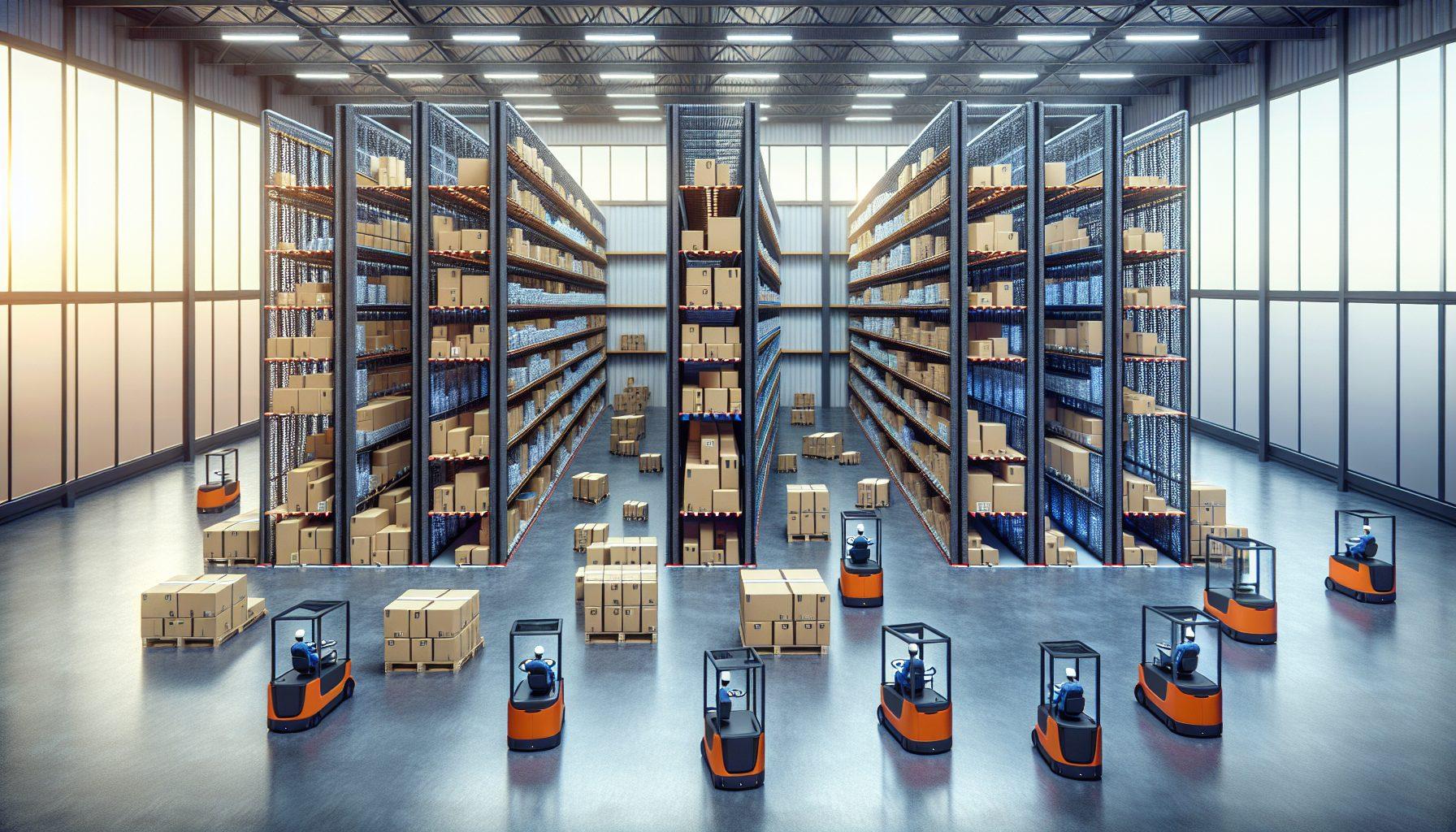Warehouse inventory carrying costs can be a significant expense for businesses. These costs include storage fees, insurance, labor, and the risk of obsolescence or damage to inventory. It is crucial for companies to find ways to reduce these costs and improve overall warehouse efficiency.
The Promise of AGVs
Automated Guided Vehicles (AGVs) have emerged as a game-changer in the world of warehouse optimization. These autonomous mobile robots are designed to transport goods within a warehouse without the need for human intervention. AGVs offer several benefits, including improved safety, increased productivity, enhanced efficiency, and reduced costs.
AGVs are equipped with advanced navigation systems, such as laser scanners and artificial intelligence algorithms, that enable them to navigate through the warehouse autonomously. They can move between aisles, avoid obstacles, and detect and interact with human operators or other AGVs. This level of automation minimizes human error and maintains a smooth flow of goods within the warehouse.
Perhaps one of the most significant advantages of AGVs is their ability to reduce warehouse inventory carrying costs. Let’s explore how AGVs achieve this:
1. Optimal Space Utilization
AGVs are designed to take up minimal space in a warehouse. Unlike traditional forklifts or manual labor, AGVs follow predefined routes and can operate within narrow aisles. This allows for efficient use of warehouse space, enabling businesses to store more inventory within the same footprint. By maximizing storage capacity, companies can reduce storage fees and avoid the need for additional warehouse space.
AGVs also excel at utilizing vertical space. With their precise navigation systems, AGVs can stack and retrieve goods from high shelves with ease. This eliminates the need for human operators to access elevated areas using ladders or other equipment, reducing the risk of accidents and improving overall warehouse safety.
2. Continuous Inventory Tracking
AGVs are equipped with state-of-the-art inventory tracking technologies, such as barcode scanners or RFID readers. As AGVs move through the warehouse, they can scan and record inventory information accurately and in real-time. This level of visibility allows businesses to have accurate inventory data, ensuring that stock levels are always up to date.
With continuous inventory tracking, businesses can avoid stockouts or overstocking situations. AGVs can notify warehouse managers or trigger automated replenishment processes when stock levels reach predetermined thresholds. This reduces the risk of carrying obsolete or excess inventory, optimizing storage space, and minimizing carrying costs.
3. Enhanced Order Picking Process
AGVs play a crucial role in the order picking process, which is a critical operation within any warehouse. AGVs can be programmed to retrieve specific items from designated locations and deliver them to the picking station. They can also transport completed orders to the shipping area for outbound processing.
By automating the order picking process, AGVs significantly improve efficiency and accuracy. AGVs can follow the most optimized paths within the warehouse, reducing the time taken to pick and process orders. This results in faster order fulfillment and increased customer satisfaction.
4. Minimized Inventory Damage
Warehouse inventory damage can lead to significant financial losses for businesses. AGVs help minimize inventory damage by operating with precision and caution. Unlike manual labor or forklifts, AGVs are less prone to accidents such as collisions or mishandling of goods.
AGVs are designed with safety features like sensors and collision avoidance systems that prevent accidents and protect fragile or perishable inventory. This reduces the risk of damage and eliminates the need to replace or repair damaged goods. As a result, businesses can save on inventory replacement costs and maintain a higher level of product quality.
Overall, the integration of AGVs into warehouse operations brings numerous benefits, including reduced inventory carrying costs. AGVs optimize space utilization, provide continuous inventory tracking, enhance the order picking process, and minimize inventory damage. By leveraging AGV technology, businesses can achieve higher efficiency, productivity, and cost-effectiveness within their warehouses.
If you want to learn more about AGVs and how they can transform your warehouse operations, click here to visit HCO Innovations’ website.

